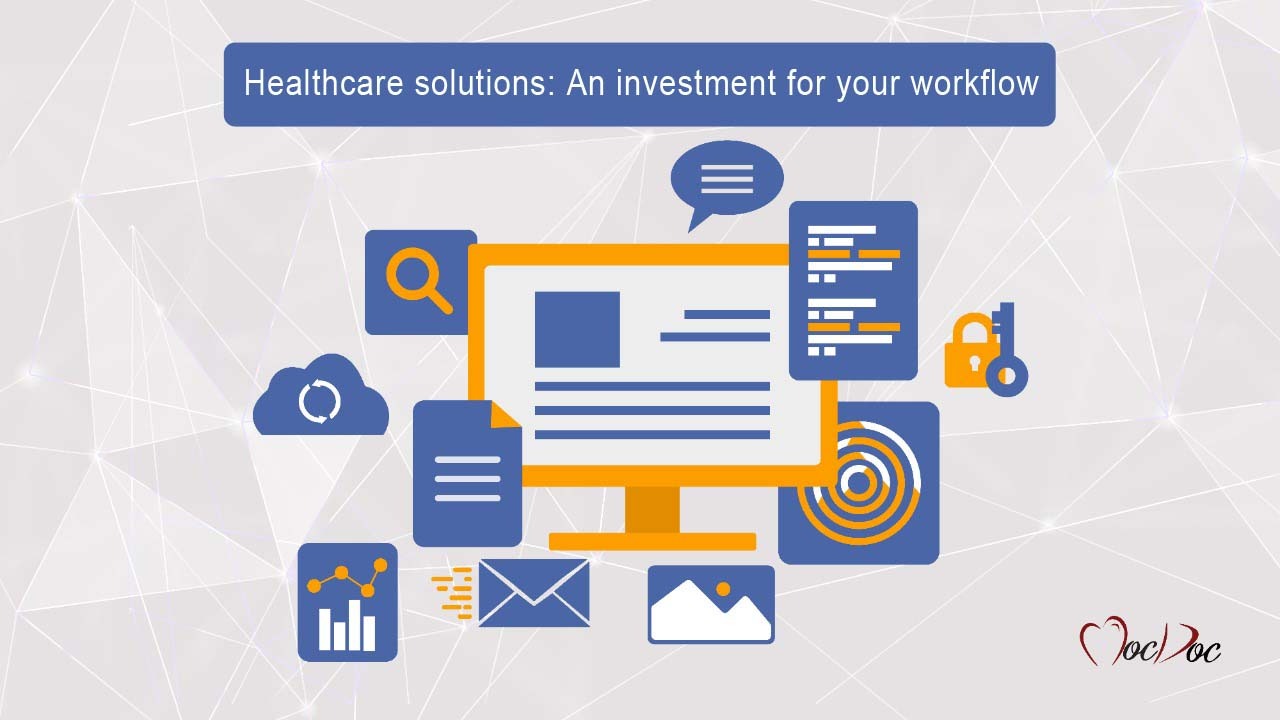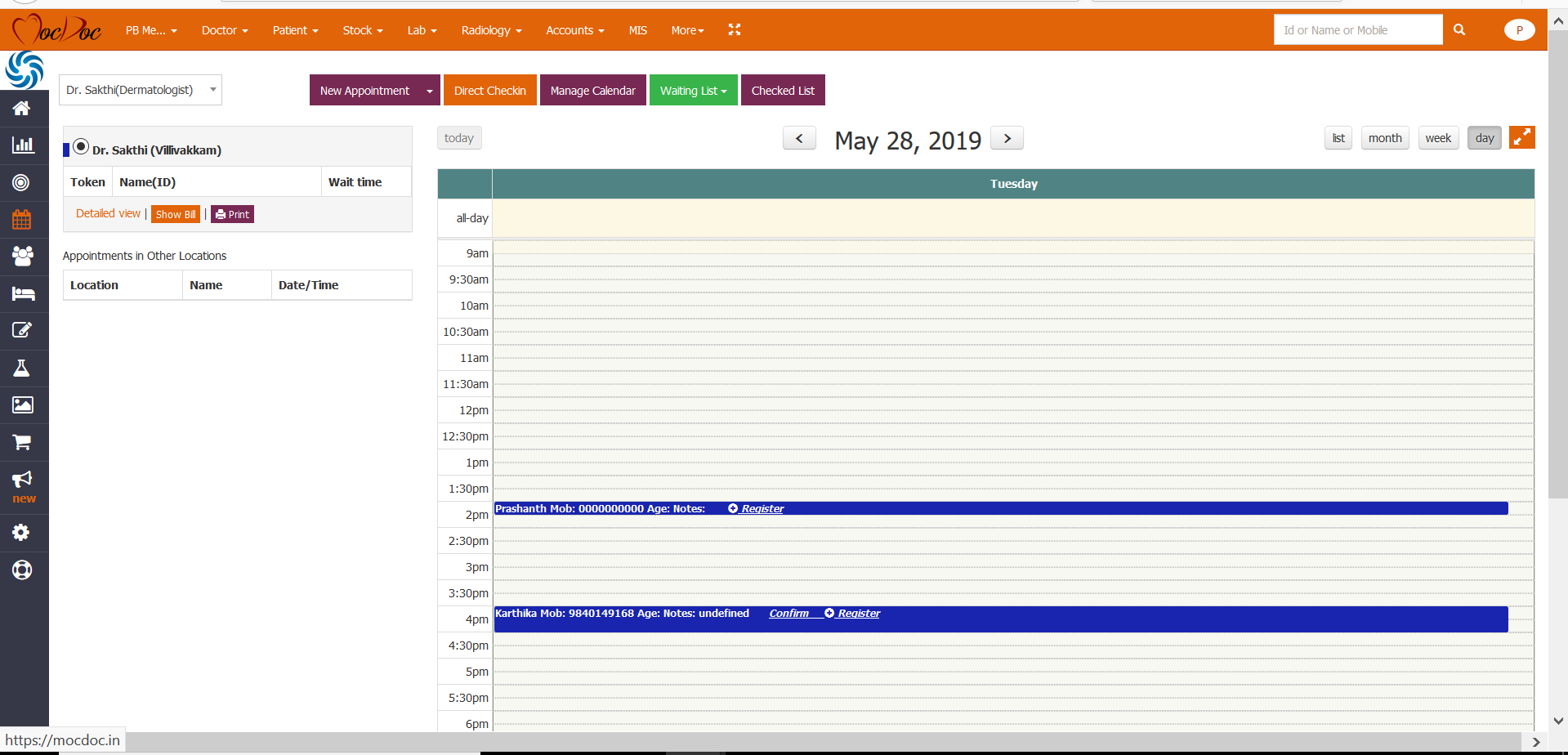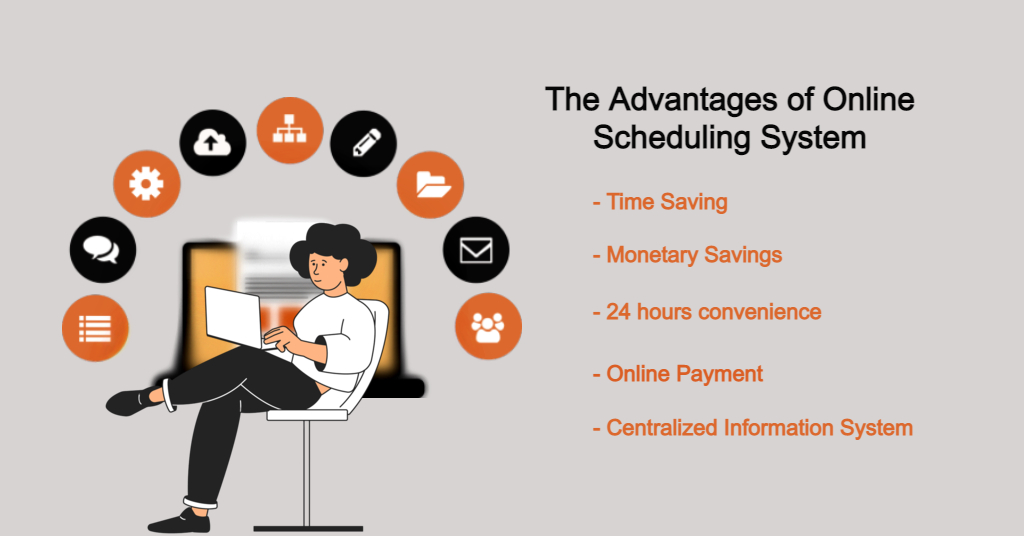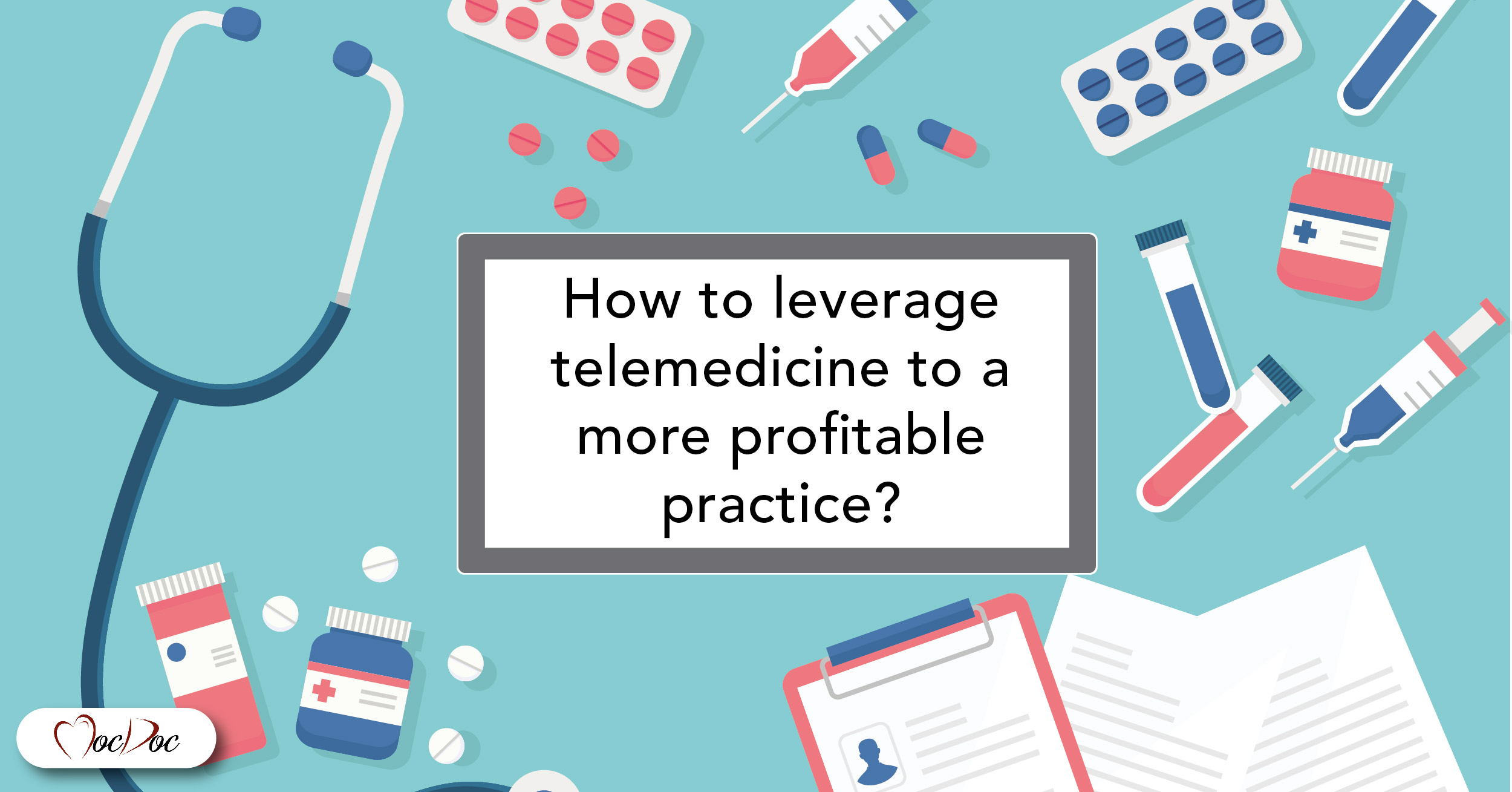MocDoc's Offerings
A note from our CEO, Senthil Kumar.
Published By
Senthil
2020032214:10:30
Category Healthcare

COVID-19 Update:
Message to our MocDoc Community,
Like you, we are also following the updates about COVID-19 with the concern of the national well-being, Our thoughts are with those who have been impacted by the virus and we wish them a full and speedy recovery.
As concerns on the recent outbreak of COVID-19, we're reaching out with a brief update to let you know how MocDoc is planning and preparing to provide uninterrupted support and service to our clients during this time.
Thank you for your understanding and for supporting us during this period. Stay safe and look out for those around you.
We are in this together, we will overcome it together!
On behalf of everyone at MocDoc,
Senthil
Founder & CEO,
MocDoc, a product of Yro Systems Pvt Ltd.
Related Articles

Universal health care is a hot topic for discussion these days, with people arguing for and against it. While proponents of the system argue that it is the right of every human being, opponents argue that it may not be economically feasible, and may harm a lot more people than it will help. The issue is much more complicated by the fact that there is no one system in the world that is adopted by all the countries that currently has universal healthcare, and therefore it becomes difficult to gauge its success across the world. Let us try to break this complex issue to gain a better understanding of the system, and form informed opinions.
Universal health care is a system that ensures all the people in a region or a country gets healthcare without affecting their financial status. According to WHO Universal health coverage (UHC) means that all people and communities can use the promotive, preventive, curative, rehabilitative and palliative health services they need, of sufficient quality to be effective, while also ensuring that the use of these services does not expose the user to financial hardship. In practice, this does not mean that everyone has insurance coverage or that all medical issues are covered by the insurance, it just means that everyone has access to healthcare.
Universal healthcare first started in Germany in 1883 with the sickness insurance law, which mandated industrial employers to provide insurance for their workers using funds made from deductions in employee wages and from employer contributions. By 1930s, almost all of western and central Europe had similar systems in place. Currently, of the 33 developed countries, all of them except the USA has universal healthcare.
Implementation strategies
Even though the definition of universal healthcare is uniform throughout the world, the implementation strategies used in different countries are very diverse and difficult to classify. Each of these systems are linked with the governing systems and the laws and regulations of that country, and therefore may even differ in different parts of a single country, as in the different provinces of Canada, where each province has reasons to determine what is considered essential, and where, how and who should provide the services.
In some cases, the government pays for healthcare from a single fund. In some countries like Canada, this would mean that the government pays private organizations which in turn provide healthcare to its public, while in countries like the United Kingdom, the government maintains a healthcare system, owning healthcare resources and employing healthcare professionals. Such systems are referred to as single-payer systems, which means that the fund for the system is managed directly by the government or a government regulated agency. In such a system, the entire population is brought together under a single health risk pool, and one set of standards for services offered, and the cost for these services. Generally, the idea is that the high healthcare costs that arise from the sicker section of the population are balanced by the low healthcare costs for the healthy section of the population.
In a multi-payer system, the medical costs are paid for by multiple entities, which may include the person or their family, their employer, and the government. Countries like Germany follow a multi-payer system, with a statutory health insurance, and private health insurance. Compared to single-payer systems, multi-payer systems provide more options to the patients, and are generally difficult for the governments to exploit, but falls below in terms of healthcare equity, risk pooling, and negotiations. Multi-payer systems are also associated with higher administrative costs.
In some countries like Switzerland and Germany, universal healthcare is enforced by legislation. In Switzerland, there are no free state-provided health services, but private health insurance is compulsory for all persons residing in Switzerland (within three months of taking up residence or being born in the country). Swiss are required to purchase basic health insurance, which covers a range of treatments detailed in the Swiss Federal Law on Health Insurance. It is therefore the same throughout the country and avoids double standards in healthcare. Insurers are required to offer this basic insurance to everyone, regardless of age or medical condition.
The advantage of universal healthcare is that everyone gets medical coverage, no matter how poor they are, and everyone gets the same standard of care. Various studies have shown that universal healthcare has lead to healthier populations, with lower infant mortality rates and improved life expectancy. Universal healthcare is also associated with improved economic well being of the population. In Thailand within ten years of the implementation of Universal Health Scheme, the catastrophic healthcare expenditure in the poorest households fell from 6.8% to 2.8%. In Mexico, impoverishment from health expenditure fell from 3.3% in 2001 to 0.8% in 2010, with the implementation of a national protection programme called Seguro Popular, funded by general taxation and modest contributions from richer households.
Implementation of universal healthcare is complicated with a lot of difficult choices. The healthy section of the population ends up paying for the sicker section of the society, the money which may well be spent on economically better ventures, which will improve the quality of life for everyone. Universal healthcare may end up crippling the economy and may even lead to poor quality of healthcare, as doctors have more incentive for treating more patients, but less for treating fewer patients with more care. People may also be less careful of their health and can lead to less healthy choices if they don’t have the incentive to stay healthy.
So the debate on whether universal healthcare is good or bad, essentially is a debate on how to achieve universal healthcare - should it be done by implementing laws and regulations specifically for universal healthcare, or should we do it improve the overall standard of living that access to healthcare is not a problem for anyone.
The success of a universal healthcare system will depend on how it is implemented, and choices have to be made based on the size of the population, the economic well-being of the population, the available funding and the fine balance between the choice similar to as mentioned above.
Universal healthcare - let’s...
Universal health care is a hot topic for discussio..... Read more

Healthcare solutions: An inves...
How could healthcare solutions be i..... Read more

Exploring The Benefits of Online Appointment Systems
What are the advantages of an Online Scheduling System?
- Booking inoculations and vaccines in hospitals.
- Scheduling a patient’s treatment, services, and appointments.

Time-Saving:
Monetary Savings:
24 hours convenience:
Online Payment:
Centralized Information System:
Benefits of an Online Appointm...
Exploring The Benefits of Online Appointment Syste..... Read more

Leveraging telemedicine to profitable practice helps in enhancing patient retention, increasing revenue, and delighting your office staff. The advantages can be quickly gained through the option of telemedicine.
Powerful financial incentives for the providers and intense consumer requirements for the service are the two critical things that drive the sharp spike in the field of telemedicine technology.
Both private payers and legislatures are allowing the arise of telemedicine by representing parity laws and policies in telehealth. They identify the requirements to expand access to care while leveraging healthcare resources effectively.
How do make use of telemedicine to improve profitability?
There are many reasons to list why influencing telemedicine can bring more profit to you. In this blog, let's check out a few steps that can be used for influencing telemedicine into a more profitable practice.
Hold your current patients and amuse them:
There are numerous healthcare options available than before for the patients to choose from. There are a different number of urgent care facilities, retail-based walk-in clinics, and thousands of online opportunities. These variations to in-office care are prominent with patients, especially for regular issues like flu, skin conditions, other ailments, colds, UTIs, and more as they are inexpensive, quick, and convenient. The practices which provide video visits provide the patient with the essential benefits of seeing their routine provider, with the added convenience that telemedicine brings.
Decrease No-Shows and Cancellations:
Practice profitability is hard when any of the appointments are missed. They are also bad when considering the outcomes of patient health. A good number of the reasons why people cancel or show up at the last minute are withdrawn by telemedicine. Patients need not consider taking time off work, transportation, or arranging for childcare.
Grab good patient outcomes:
It's easy for patients to follow up on the next visit through the recommendation process in telemedicine. They are an accurate tool for lifestyle coaching, post-hospitalization care, and medication management. Compliance and increased patient management system lead to smaller unnecessary complications as well as help in better case management.
Make a profit with telephone calls:
Most of the payers do not compensate for the provider's telephone but rather only follow-up calls. Few conversations like medication checks and reviewing test results will not be paid if it's done over the phone. Most of the exchanges become counterpoised by adding videos. Making use of the video also makes these relevant encounters and make them understandable to the patients.
See More patients:
In-office care is not much effective when compared with online visits using telemedicine. Practices that influence video will see several patients every day with identical providers. Most countries and states need insurers to compensate providers for visiting telehealth at an equal rate similar to in-office care. It's also recognized that most of the insurers follow this set of rules in the states that do not need it. It indicates that most of the visits are performed every day or week, and this can have a substantial impact on the profit and revenue along with the added cost.
Enjoy an excellent Life Balance/Work:
May practices that provide visits through video find that the reliability it offers has a full impact on well being of the provider. Few of them prefer to move some appointments to the weekend or work from home for a few hours. The providers are provided a chance of enjoyment to take care of their tasks during the workweek, and the patients also appreciate the prospect to get attention outside of regular hours in the business. There is no extra office expense if there are hours extended or else the visit can happen from anywhere.
Boost employee satisfaction:
Video visits are mostly preferred by medical office workers as they make the office run flexibly and smoothly. They also alleviate a few administrative works by making every patient come to their office. The waiting rooms are quieted and less crowded with fewer patients in the office, and there is not much risk of grabbing the illness from the already present patients. This extra time provides extra office staff to work on the practices and strategies at work. The team also gets an advantage when the practice is growing or gaining more profit.
Video technology can be the best game-changer in the coming years, which implementing an efficient program. Office workers, providers, and patients all win when the practice of telemedicine is thoughtfully applied with the right education and technology.
For More Information Visit MocDoc Digital Healthcare Solutions.
How to leverage telemedicine t...
Leveraging telemedicine to profitable practice hel..... Read more